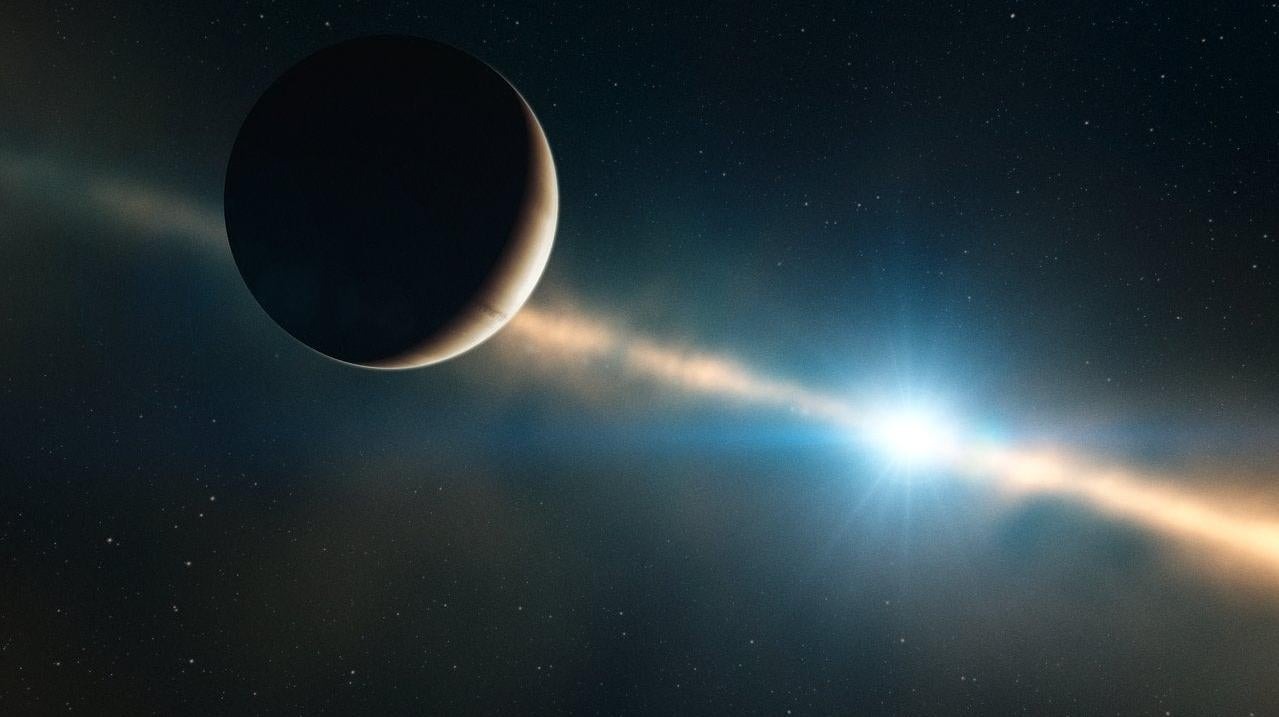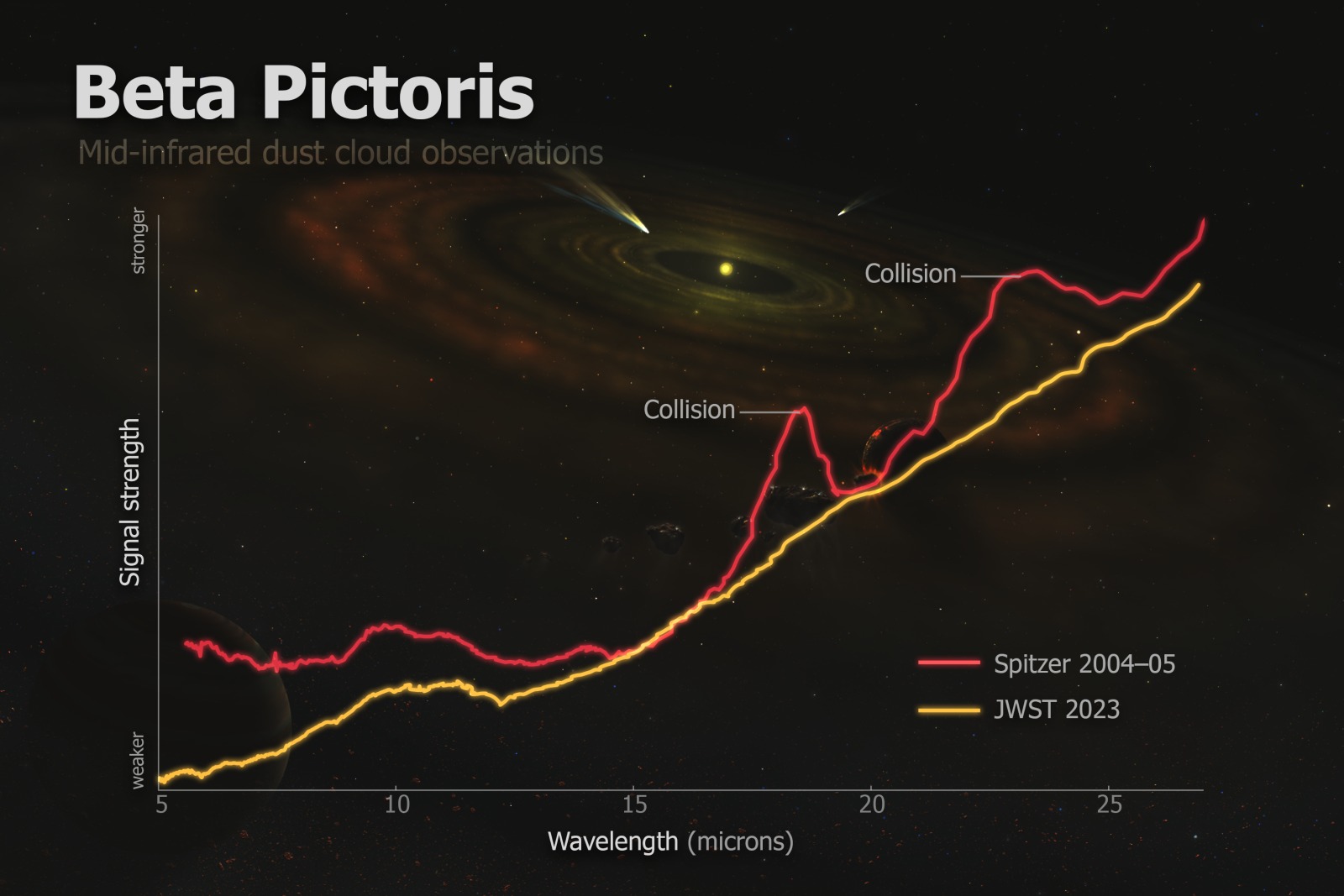Nearly 20 years ago, astronomers discovered a large cloud of dust around a young star 63 light-years away from Earth. However, new observations from the James Webb Space Telescope have revealed that this cloud has mysteriously disappeared. Research suggested that the dust cloud could have been the result of a powerful collision of large asteroids in the Beta Pictoris star system.

Analyzing the new data, the scientists noticed significant changes in the energy characteristics of the dust, including the disappearance of particles that had been observed previously. A comparison of data from James Webb with observations from another Spitzer space telescope from 2004 and 2005 suggests that a catastrophic collision between large asteroids occurred about 20 years ago, breaking them into fine dust. The dust cooled as it moved away from the star, so it no longer emitted heat as previously observed by Spitzer. The new findings were presented at the annual meeting of the American Astronomical Society.
Impressive changes in 20 years
Christine Chen, an astronomer at the Space Telescope Science Institute and Johns Hopkins University, first observed Beta Pictoris in 2004 with Spitzer. This star system is known for its proximity and brightness. Returning to the observations of Beta Pictoris a few years later with James Webb, Chen found changes in the system that surprised her greatly. The team focused on the thermal emission from crystalline silicates, minerals that are commonly found around young stars, and found no trace of the particles previously observed in 2004 and 2005.

“Whenever astronomers look at the sky and they see something, we always assume that everything is in steady state, that it’s not changing. The reason why we think that is because if you think about the particular instant that you’re looking at, that’s very short compared to how old these objects are, so we just think that the chances that you catch anything interesting are very small,” Chen says.
A more powerful cataclysm than killing dinosaurs
Beta Pictoris is 20-26 million years old. This is a young system compared to our Solar System, which is 4.6 billion years old. In their early years, star systems are more unpredictable due to the formation of terrestrial planets by collisions of giant asteroids.
The changes in the star system were significant. According to astronomers, the dust cloud was 100,000 times larger than the asteroid that killed the dinosaurs. This indicates that the impact that formed this cloud probably involved an asteroid the size of Vesta, the second-most massive body in the main asteroid belt, with a diameter of about 530 kilometers. The dust was scattered by the star’s radiation, heating up and emitting the heat that Spitzer observed. Webb’s new observations showed that the dust had disappeared and had not been replaced, indicating a violent collision.
“We think that big collisions like this must have happened in our solar system when it was of a similar age as part of the terrestrial planet formation process. We can look at old terrestrial surfaces of the Moon, Mars, and Mercury and they all have craters on them, which tells us that impacts were much more frequent when our solar system was young,” Chen explains.
Observations of Beta Pictoris allow scientists to investigate whether there is a formation process similar to that in our solar system, and how early collisions affect the suitability for life to form in stellar systems.
We previously reported on how the TESS telescope discovered more than 30 exocomets in a nearby star.
According to gizmodo.com


